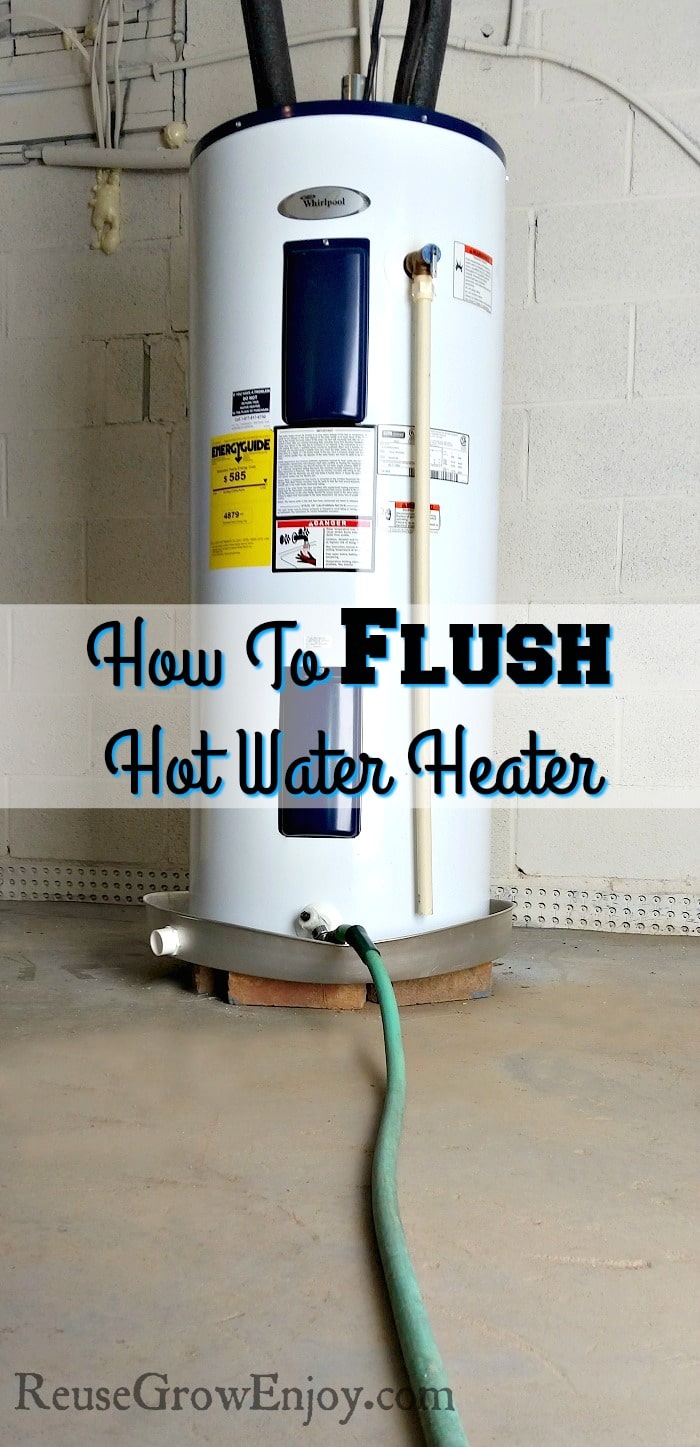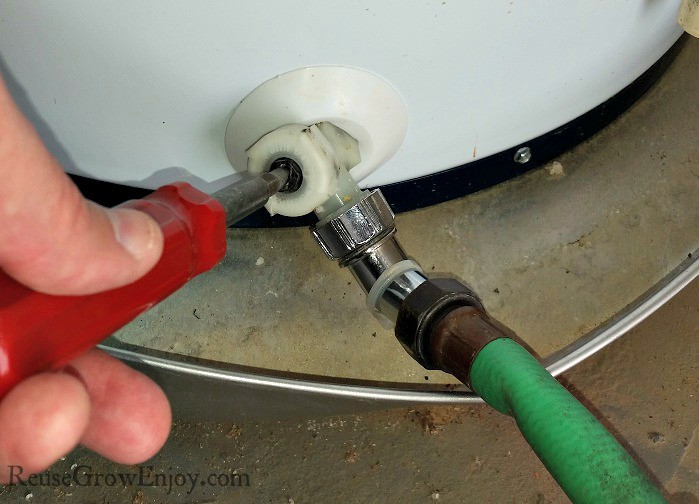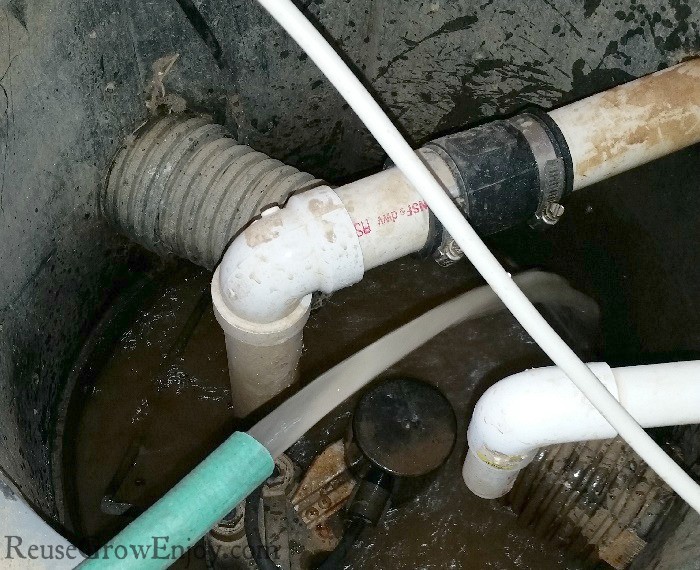Is your electric water heater not working as well? Or maybe you just want to make sure that it keeps working as it should? That is when it is handy to know how to flush hot water heater.

With colder weather quickly approaching, we are reminded all too well that winter is coming. Colder temperatures mean some of our appliances will have to work harder costing us more money to keep up.
For example, our hot water heater will have to run longer to provide us with our necessary supply of hot water needed for cooking, washing clothes, and dishes, and even showering ourselves.
Most hot water heaters do not need much maintenance. We invest in this product and it will provide us with years of reliable service if we take care of the regular maintenance.
But for some of us, especially those of us with dug wells, our hot water heaters can get sediment buildup. This buildup of sediment can cover the heating elements’ mineral deposits and other gunk and either burn them out or restrict their ability to heat our water.
There is a pretty easy way to get this out and make your heater work to its manufactured efficiency. So I am going to show you step by step how to flush hot water heater. It is a good idea to do this at least one time per year but shoot for two times per year.
I should also note that these steps are for an electric hot water heater. If you have a gas heater you do not have to worry as much about the gunk burning out the elements as gas tanks do not have elements.
Do You Have To Have A Licensed Plumber To Flush?
The good news is you do not have to have a professional plumber to flush your electric heater. The best way to extend the life of your water heater is to stay on top of water heater maintenance.
So doing that it is not always cost-effective to hire it out and it is a good idea to learn how to do these things on your own. In the long run, it really will save you a lot of money.
It only takes a few simple steps for the entire process. From start to finish, the flushing process only takes 20 minutes or less.
The most extreme caution you need to have is to be sure to turn off the power source before opening the water heater drain valve to flush the sediment build-up.
However, I am not a professional so if you are not comfortable doing this on your own, feel free to contact your local plumber.
What Happens If You Don’t Do Maintenance?
When you maintain your hot water heater it maintains its energy efficiency meaning the energy costs are lower. It also helps to keep the water temperature nice and hot.
However, if you do not keep up with maintenance and allow the accumulated sediment to stay in your tank, it will cost you more to heat.
Also with a neglected water heater, your heating elements will burn out much faster and need to be replaced a lot sooner. So it really is a good idea to keep your tank in good shape so you can enjoy that hot shower.
How To Flush Hot Water Heater:
Step 1:
Go to your main circuit breaker panel or fuse box and turn off the power to your water heater.
Step 2:
Depending on where your hot water heater is, you may need a standard garden hose and or bucket. You need to make sure it is long enough so the end of the hose can reach a drain such as a basement floor drain.
I found one of my hoses that had a split about halfway down and just cut it off to reach the drain. Great way to make use of something that would have been tossed out.
If you live in a trailer or small house where the tank is inside, just run it out the door into the yard. Maybe yours in the cellar like mine, run the hose to whatever place water can safely be drained.
If you do not have a place for the water to drain, be sure to run it into a bucket (but you will need to dump it many times before the tank is empty).
Hook the hose to the bottom of the tank of your heater. Well, I should say the bottom side of your water heater tank. You should see a connector there that the hose will fit on.
Step 3:
The next step when you are sure the water can safely be drained away, open the drain right near where you connected your water hose.
Some have a handle to spin on the tank drain valve and for others, you will need a screwdriver to open the drain valve.
When you have it open, the water will be pushed out through the hose to your drain. Watch this carefully. At first, it will appear muddy. This is your sediment being removed from your tank.
It might take just a few minutes if you don’t have much sediment but if there is a lot of sediment it can take a while for this to clear up.
If it runs clear pretty soon after you open the hot water heater drain, try stepping on the hose, then quickly stepping off a few times to partially stop the water flow.
This will cause the water pressure to back up and loosen some stubborn sediment still trapped inside.
You might see the water begin the get dirty again for a short while but no problem. Just let it drain for a few minutes until it clears up again.
Step 4:
When it clears up, turn the heater drain back to closed / off. Unhook your hose from the bottom of the heater and go back to the breaker box and turn the power supply back on again.
Hopefully, you notice a hotter and quicker heating of your hot water. Maybe even lowering your energy bill slightly.
If you still have a really long time with your water reaching temperature, you might need a new heating element.
This is a little more difficult to change, but not bad. I will show you how to do this repair in my post on DIY Water Heater Repair – How To Change Heating Elements.
Frequently Asked Hot Water Heater Questions:
Q. Do you have to flush a tankless water heater?
A. Yes! While it may be tankless it does still have a chamber that needs to be flushed.
Q. How often should you flush a hot water tank?
A. You should flush it once a year.
Q. Do you have to flush a gas hot water heater?
A. While it is not as crucial as an electric heater, it is still a good idea to flush a gas heater as well. The steps are a little different as you will need to make sure you turn off the gas supply before flushing the tank.
Q. When you flush the tank does it empty the whole water heater’s tank?
A. It may depend on the size of the tank. If you have a small tank or one that is considered tankless, then it may empty it. However, if you have a large water heater it will only drain several gallons of water from the tank.
Q. Do you have to replace the heating element when you flush the tank?
A. No! You only need to replace the elements if they are going bad and burning out. If you flush your tank yearly, you should be able to avoid replacing the heating elements for many years.
Q. Do you have to wait hours after flushing before you can use the hot water?
A. This will also depend on the size of the tank. If you have a large tank, then no. You should still have some hot water left that you can use. However, even if you drain most of the water, if you have a good heater it should not take too long to heat the water. That is another reason to keep up with the maintenance of your heater to keep it running well.




Anonymous says
You left out refilling the water tank before you turn the power back on! The elements will burn out unless submerged
Reuse Grow Enjoy says
You are right, elements will burn if not submerged. However, because we are just flushing it in this tutorial and not emptying it, we never shut off the water going to the heater. So it is refilling as we are draining and by the time you close the drain valve and remove the hose and go to the power box the tank should be filled to the top. When flushing you never really lower the water below the elements, we just turn the power off in the off chance you drain faster then the water refills as a precautionary measure.
Now in our tutorial on How To Change Heating Elements we clearly say the tank needs to fill before turning it on.
Anonymous says
The water heater will not have a void due to missing water…..the water refills at exactly the same rate that it empties. So, there is not any reason to attempt to refill it.
Adrienne C. says
Great Article! Thank you for sharing this is informative post on flushing hot water heater. This helped me a lot!
Rodney M. says
Just moved into a new house. Will start a maintenance plan, and the hot water heater will be on the list. Thank you for all your information.
Reuse Grow Enjoy says
Your welcome! Congratulations on the new house!
DJ says
We don’t “heat” hot water… it’s simply a “water heater”
Reuse Grow Enjoy says
Thank you so much for taking the time to state the obvious. I was always brought up calling it a hot water heater as there are many types of water heaters that are not ones you use for getting hot water.
Mark says
When flushing an electric water heater do you recommend checking the sacrificial anode, and replacement if needed? If so how often should this be completed?
Reuse Grow Enjoy says
I do not check the elements every time I flush as I recommend flushing once per year. With the elements I would only check if you think there is an issue or every 3-4 years.